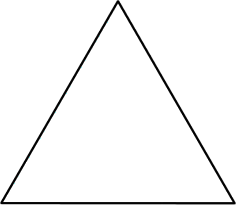25 JUL 2014 by ideonexus
 The Paleo Meat-Eater Myth
The Paleo Meat-Eater Myth
So, myth one is that humans are evolved to eat meat and that Palaeolithic peoples consumed large quantities of meat. Humans have no known anatomical, physiological, or genetic adaptations to meat consumption. Quite the opposite, we have many adaptations to plant consumption.
Take, for example, vitamin C. Carnivores can make their own vitamin C, because vitamin C is found in plants. If you don’t eat plants, you need to make it yourself. We can’t make it, we have to consume it from plants....Folksonomies: diet
Folksonomies: diet
11 JUN 2012 by ideonexus
 The Archeologist's Search Image
The Archeologist's Search Image
A fossil hunter needs sharp eyes and a keen search image, a mental template that subconsciously evaluates everything he sees in his search for telltale clues. A kind of mental radar works even if he isn't concentrating hard. A fossil mollusk expert has a mollusk search image. A fossil antelope expert has an antelope search image. ... Yet even when one has a good internal radar, the search is incredibly more difficult than it sounds. Not only are fossils often the same color as the rocks among...Folksonomies: fossils archeology
Folksonomies: fossils archeology
Varies from hunter to hunter, but must be able to find camouflaged bones that might be fragmented into many pieces.
29 MAY 2012 by ideonexus
 The Importance of Studying the Skeleton in Evolution
The Importance of Studying the Skeleton in Evolution
The occurrence of an internal skeleton, in definite relations to the other organ systems, and the articulation of the body into homologous segments, are points in the general organization of Vertebrates to which especial weight must be given. This metameric structure is more or less definitely expressed in most of the organs, and as it extends to the axial skeleton, the latter also gradually articulates into separate segments, the vertebrae. The latter, however, must be regarded only as the p...Folksonomies: evolution evolutionary biology
Folksonomies: evolution evolutionary biology
Quoting Karl Gegenbaur.
20 MAY 2011 by ideonexus
 Skeletal Similarities in Mammals
Skeletal Similarities in Mammals
What a piece of work is the mammalian skeleton. I don't mean it is beautiful in itself,
although I think it is. I mean the fact that we can talk about 'the' mammalian skeleton at all: the fact
that such a complicatedly interlocking thing is so gloriously different across the mammals, in all its
parts, while simultaneously being so obviously the same thing throughout the mammals. Our own
skeleton is familiar enough to need no picture, but look at this skeleton of a bat. Isn't it fascinating
ho...There are corresponding bones across species, evolved into other functions.




